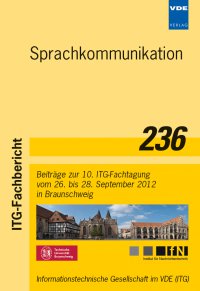A Beamformer Post-Filter with Hybrid Noise Coherence Functions Instrumentally Optimized Using a Figure of Merit
Conference: Sprachkommunikation - Beiträge zur 10. ITG-Fachtagung
09/26/2012 - 09/28/2012 at Braunschweig, Deutschland
Proceedings: Sprachkommunikation
Pages: 4Language: englishTyp: PDF
Personal VDE Members are entitled to a 10% discount on this title
Authors:
Yu, Huajun; Fingscheidt, Tim (Institute for Communications Technology, Technische Universität Braunschweig, 38106 Braunschweig, Germany)
Abstract:
Multichannel speech enhancement employing a microphone array beamformer with a post-filter allows for noise attenuation along with a good preservation of the useful speech component. However, the noise coherence function plays a critical role within the post-filter estimation. Current state-of-the-art approaches for post-filter estimation utilize the a priori knowledge of a diffuse noise field in an automobile noise environment. However, the automobile noise environment varies with different driving conditions. In this paper, we focus on optimizing the post-filter by using a hybrid coherence function, which is a mixture of the diffuse and the measured noise coherence function for a specific driving condition. The idea is that the driving condition information can be taken from the controller area network (CAN)-bus data in modern cars in real time, selecting a stored hybrid coherence function. The optimization of parameters is carried out in a data-driven approach, using a figure of merit constructed by three independent instrumental quality measures. The optimized post-filter with the individually optimized hybrid coherence functions for each driving condition shows an improved performance compared to just relying on a diffuse noise coherence assumption throughout.


